 Christmas is once again around corner, and hopefully we can spend some time with friends and family. For many people around the world it is a time of reflection, and a time to celebrate old family traditions or to create new ones. We all have our favourite Christmas meals and treats, and that goes for music as well. As long as I can remember, listening as a family to the first section of the Bach “Christmas Oratorio” was a beautiful part of our holiday celebration. And that tradition, as far as I am concerned, will continue. Everybody interested in Classical music knows some of the wonderful pieces written by Bach, Handel, Corelli, Berlioz, and Messiaen for that occasion.
Christmas is once again around corner, and hopefully we can spend some time with friends and family. For many people around the world it is a time of reflection, and a time to celebrate old family traditions or to create new ones. We all have our favourite Christmas meals and treats, and that goes for music as well. As long as I can remember, listening as a family to the first section of the Bach “Christmas Oratorio” was a beautiful part of our holiday celebration. And that tradition, as far as I am concerned, will continue. Everybody interested in Classical music knows some of the wonderful pieces written by Bach, Handel, Corelli, Berlioz, and Messiaen for that occasion.
But the Universe of Classical music is much bigger than that, so we decided to feature some Christmas music that might not be as immediately familiar. Do you know the peaceful “Christmas Greeting” with words by Caroline Alice Elgar and music by her husband Sir Edward Elgar? The couple spent Christmas in Rome in 1907, and this seasonal greeting is scored for high voices, violins and piano. It even contains a reference to Handel’s “Messiah.”
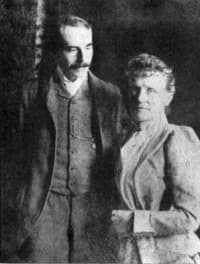
Edward and Alice Elgar
Bowered on sloping hillsides rise
In sunny glow, the purpling vine;
Beneath the greyer English skies,
In fair array, the red-gold apples shine.
To those in snow,
To those in sun,
Love is but one;
Hearts beat and glow,
By oak and palm.
Friends, in storm or calm.
Edward Elgar: A Christmas Greeting, Op. 52
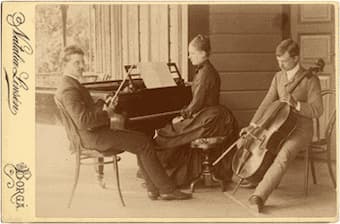
Sibelius family trio
For most listeners today, Jean Sibelius (1865-1957) is primarily known for his seven symphonies, orchestral tone poems, and the violin concerto. It is less well known that he also composed over 100 songs for voice and piano. And it turns out, that his Opus 1 is a collection of five Christmas Songs in the Finish language composed between 1897 and 1913. In Finland, two of the songs “Don’t give me splendor, gold or pomp,” and “High are the snowdrifts” are still sung across the country today. Sibelius’ granddaughter remembered them being played in the composer’s household, “he played so loud, with the pedal down as if he were playing the organ. This was all very jolly.” Four of the settings use texts by Zacharias Topelius and one is by Wilkku Joukahainen. The songs are very short and stylistically simple, and Sibelius is able to evoke the Christmas mood by the greatest economy of means. Sibelius made several arrangements of “Give me splendour,” which turns out to be the most popular song of the set.
Jean Sibelius: 5 Christmas Songs, Op. 1 (Tom Krause, baritone; Irwin Gage, piano)
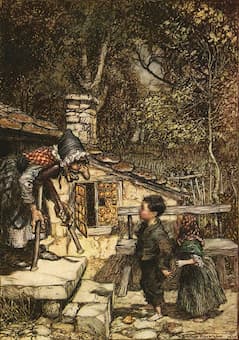
Hansel and Gretel
The fairy-tale opera “Hansel and Gretel” by Engelbert Humperdinck started out as a Christmas gift. Originally, the composer’s sister Adelheid Wette asked Humperdinck to compose music for texts she had written for her children for Christmas. That text was based on the famous fairly tale by the Brothers Grimm, and features a brother and sister abandoned in a dark forest. They fall into the hands of an evil witch who lives in a gingerbread house and wants to eat the children. In the end, Gretel outsmarts the witch and kills her. Humperdinck set to work and on Christmas 1890, he presented an operatic work with songs and dialogue to his fiancée Hedwig Taxer as a Christmas present. Over the following year, Humperdinck expanded the work into a full-fledged opera, and he once again presented the score to Hedwig as a present for Christmas in 1891. Humperdinck’s Christmas present kept on giving, and it premiered in Weimar on 23 December 1893 with Richard Strauss conducting. Audiences loved the folk music-inspired melodies, and it has been closely associated with Christmas since its earliest performances.
Engelbert Humperdinck: Hansel and Gretel, Act 1
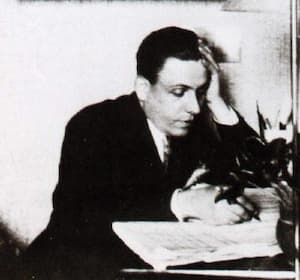
Francis Poulenc
Francis Poulenc (1899–1963) was raised a strict Catholic by his father. As a youth he predictably rebelled, and for some time he had a rather ambivalent connection to the spiritual realm. Following the death of a close fried in an automobile accident in 1936, however, Poulenc rediscovered his Roman Catholic faith and “replaced the ironic nature of his neo-classicism with a newly found spiritual depth.” Poulenc composed many deeply religious works and that includes his 1952 “Four Motets for the Time of the Nativity.” The first motet “Oh Great Mystery” announces the birth of the baby Jesus and reverence for the Virgin Mary. “Shepherds, tell whom you saw” sets a text from the Christmas Matins service, and “Seeing a Star” depicts the journey of the Magi. The joyous final motet “Today Christ is born” is an exuberant, festive and actually funny celebration.
Francis Poulenc: Quatre motets pour le temps de Noël
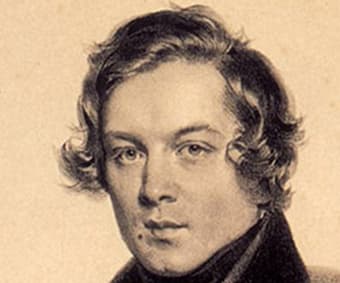
Robert Schumann
Robert Schumann (1810-1856) was always interested in making contribution to the instrumental and vocal training of the young. Most of us have played piano pieces from his “Album for the Young,” which he published in 1848. His “Album of Songs for the Young” is probably less well known. Schumann writes, “Try, if you also have only a little voice, to sing from the page without the help of the instrument… But if you have a resonant voice, do not hesitate a moment in cultivating it, consider it as the finest gift that heaven bestows on you! He who wants to cultivate a complete musical personality should not only strive for instrumental virtuosity, as on the piano, but should not neglect singing.” Within this collection we find a charming Christmas song, composed to words by the great Danish poem Hans Christian Andersen.
When the Christ Child, who saved us from Hell,
Was brought into the world,
He lay in his crib when the night was dark,
With straw and hay for bedding;
But the star was shining above the hut,
And the ox kissed the feet of the Lord.
Hallelujah, Child Jesus!
Take courage, sick and weary soul,
Forget your nagging sorrows.
A child was born in David’s town
To comfort every heart.
O let us pilgrimage to the little child,
And ourselves become children in mind and spirit.
Hallelujah, Child Jesus!
Robert Schumann: Lieder-Album für die Jugend, Op. 79, No. 16 “Weihnachtslied” (Thomas E. Bauer, baritone; Uta Hielscher, piano)

William Henry Fry
During my music education, I never came across the composer William Henry Fry (1813-1864). Born in Philadelphia, Fry “was the first native-born American to write for large symphonic forces, and the first to write a grand opera.” In addition, he was the first music critic for a major American newspaper, and later an important editor and lecturer on the history of music. The reason I stumbled across Fry in my search for lesser-known Christmas music is simple; he composed a Santa Claus, Christmas Symphony in 1853. It’s not really a symphony, but more like a tone poem with a distinct story line. The trumpet announced the birth of the Saviour, and the angels join in voices of praise and triumph. A Christmas Eve party follows this opening, and a reunited family is dancing, celebrating, and having a great time. As the partygoers get ready to leave for home, a snowstorm arrives in the brass. As the world goes to sleep, one can hear the Lord’s Prayer and “Rock-a-by Baby” on the soprano saxophone. The snowstorm returns and a lost and overly refreshed traveler struggles to find his way home. But then comes Santa Claus on his horse-drawn sleigh. He slides down the chimney and drops toys into stocking. With the children still sleeping, Santa departs to the sounds of galloping hooves and bells. A choir of angels sings “Adeste fideles” as the sun rises on Christmas Day. The family awakens, and the children start to play with their toys with Santa singing a hymn of praise. All I can say is, Ho Ho Ho.
William Henry Fry: Santa Claus, “Christmas Symphony” (Royal Scottish National Orchestra; Tony Rowe, cond.)
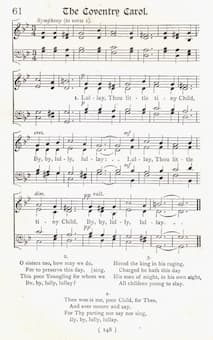
Coventry carol
Traditionally sung at Christmas or the surrounding Christmas holiday season, Christmas carols are some of the most popular and festive holiday songs. The first known Christmas hymns date back to ancient Rome, but one of my favourites is the “Coventry Carol” dating from the 16th century. It was traditionally performed as part of a mystery play in Coventry, and that play isn’t particularly cheerful. It comes from chapter two in the Gospel of Matthew, and the carol text refers to the “Massacre of the Innocents.” Herod, the appointed Roman King of Judea, ordered all male infants under the age of two to be killed in Bethlehem. As such, the “Coventry Carol,” which has received a huge number of modern settings, is actually a lullaby sung by mothers of the doomed children.
Coventry Carol (arr. Michael McGlynn)
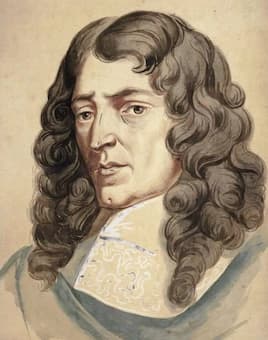
Marc-Antoine Charpentier
Christmas carols are not always strictly religious; they often are drawn from secular backgrounds and sources. And as we all know, they can range from humorous to naughty. That seems particularly true in the French noël tradition, which developed a considerable repertoire of Christmas songs. The Baroque composer Marc-Antoine Charpentier (1643-1704) served the French court during much of his career, and he composed a substantial number of church music. In his “Messe de Minuit” (Midnight Mass), written perhaps for Christmas 1694, he delightfully blends the sacred and secular. His mass is scored for chorus, soloists, flutes, strings and continuo, and it makes use of ten popular carol melodies. “Joseph est bien marié” prefaces the Kyrie, “Or nous dites Marie” introduces the three soloists in the Christe eleison, and “Les bourgeois de chastre” is part of the Gloria. These and his other Christmas song quotations would have been very familiar to contemporary audiences, like hearing “Jingle Bells” or “Silent Night” as part of a liturgical celebration today. We don’t know what Charpentier’s parishioners thought of all this, but it seems “a perfect synthesis between the liturgical and popular.”
Marc-Antoine Charpentier: Messe de Minuit pour Noël

Fanny and Wilhelm Hensel
Fanny Mendelssohn Hensel (1805-1847), the enormously talented sister of Felix Mendelssohn traveled to Italy with her husband and young son Sebastian in 1839. The family spent the better part of a year visiting Venice, Naples, and Rome. Fanny was a musical genius and one of the best pianists of her time, and she was soon the center of an international circle of expatriate artists. Fanny and her husband, the Prussian court artist Wilhelm Hensel, recorded their journey in a shared “Travel Diary,” and it contains songs and piano pieces alongside drawing and sketches. From this intimate diary grew a cycle of piano pieces titled “Das Jahr” (The Year). Completed on 23 December 1841, Fanny presented the set to her husband as a Christmas gift. The cycle sounds many musical images of the Italian trip, including a Tarantella for the Carnaval season in “February.” A dramatic snowstorm sounds in “December,” and towards the end we hear the Lutheran Christmas carol, “From Heaven High I Come to You.”
Fanny Mendelssohn-Hensel: Das Jahr (The Year) “December” (Liana Serbescu, piano)

Johannes Brahms
Johannes Brahms looked like Santa Claus, and the young Brahms greatly enjoyed the festive candle illuminations. And although it is probably hard to believe, Brahms was a shopaholic who loved searching for Christmas gifts. On Christmas Eve he would roam the local Christmas markets for suitable presents for family and friends. He bought the latest model sewing machine for his sister, and expensive toy soldiers for the Schumann boys. He frequently spent Christmas Eve with friends, and he ate a big Christmas lunch at his favorite tavern. Brahms always had some new compositions ready for the holiday season, and his most ardent supporter Eduard Hanslick reports, “For years now we have received a holiday gift from Herr Brahms’s talent, and it pleases me to say that this year, too, his songs make excellent Christmas presents.” One such present is the gently lyrical “Sacred Lullaby,” Op 91, No. 2. Scored for contralto, piano and viola, the composition builds around an old Christmas folk song.
Johannes Brahms: Geistliches Wiegenlied, Op. 91, No. 2 (Anne Sofie von Otter, mezzo-soprano; Nils-Erik Sparf, violin; Bengt Forsberg, piano)
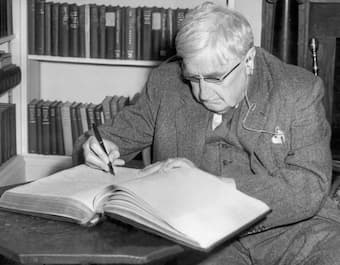
Ralph Vaughan-Williams
Ralph Vaughan-Williams (1872-1958) simply adored Christmas, and he had a lifelong passion for carols. He once remarked, “I admire the freshness, beauty and nobility of Christmas carols,” and when he began collection folksongs, he always kept an eye out for new carols. His love for Christmas and carols is reflected in a number of seasonal compositions, including the Fantasia on Christmas Carols (1912), On Christmas Night (1926), Hodie (1954) and The First Nowell (1958). The First Nowell is a nativity play for soloists, chorus and small orchestra with a scenario by Simona Pakenham, and it includes a number of traditional tunes such “On Christmas Night,” “The Cherry Tree Carol,” and “God rest you merry.” The work actually came about at the behest of Simona Pakenham, and she relates, “In early July 1958, I was asked by Austin Williams, the vicar of St Martin-in-the-Fields, to persuade Vaughan Williams to collaborate with me on the writing of a nativity play. This was to be given at a matinee at Drury Lane Theatre on 19 December in support of the Ockendon Venture—a charity that was building a village to house refugee children. I hesitated to put this to Vaughan Williams because I knew he was always busy with the composition of the moment… I went to tea at Hanover Terrace on 6 July and I was astonished that he considered the idea at all. The mere mention of Christmas inspired him. He had a passion for carols.” Hopefully some of these lesser-known and inconspicuous gems will become part of your own Christmas tradition. Merry X-mas.
For more of the best in classical music, sign up to our E-Newsletter
Ralph Vaughan-Williams: The First Nowell


